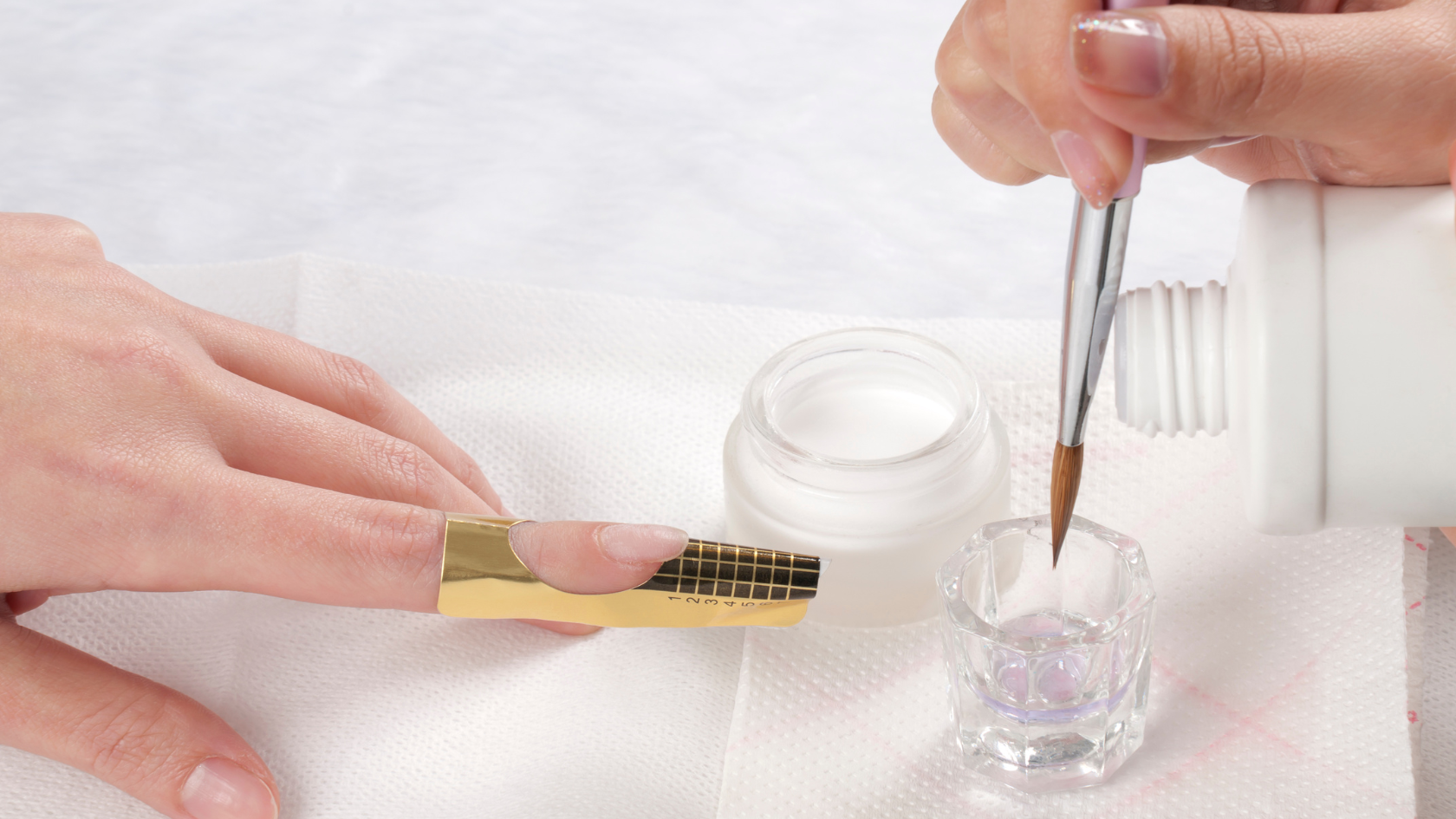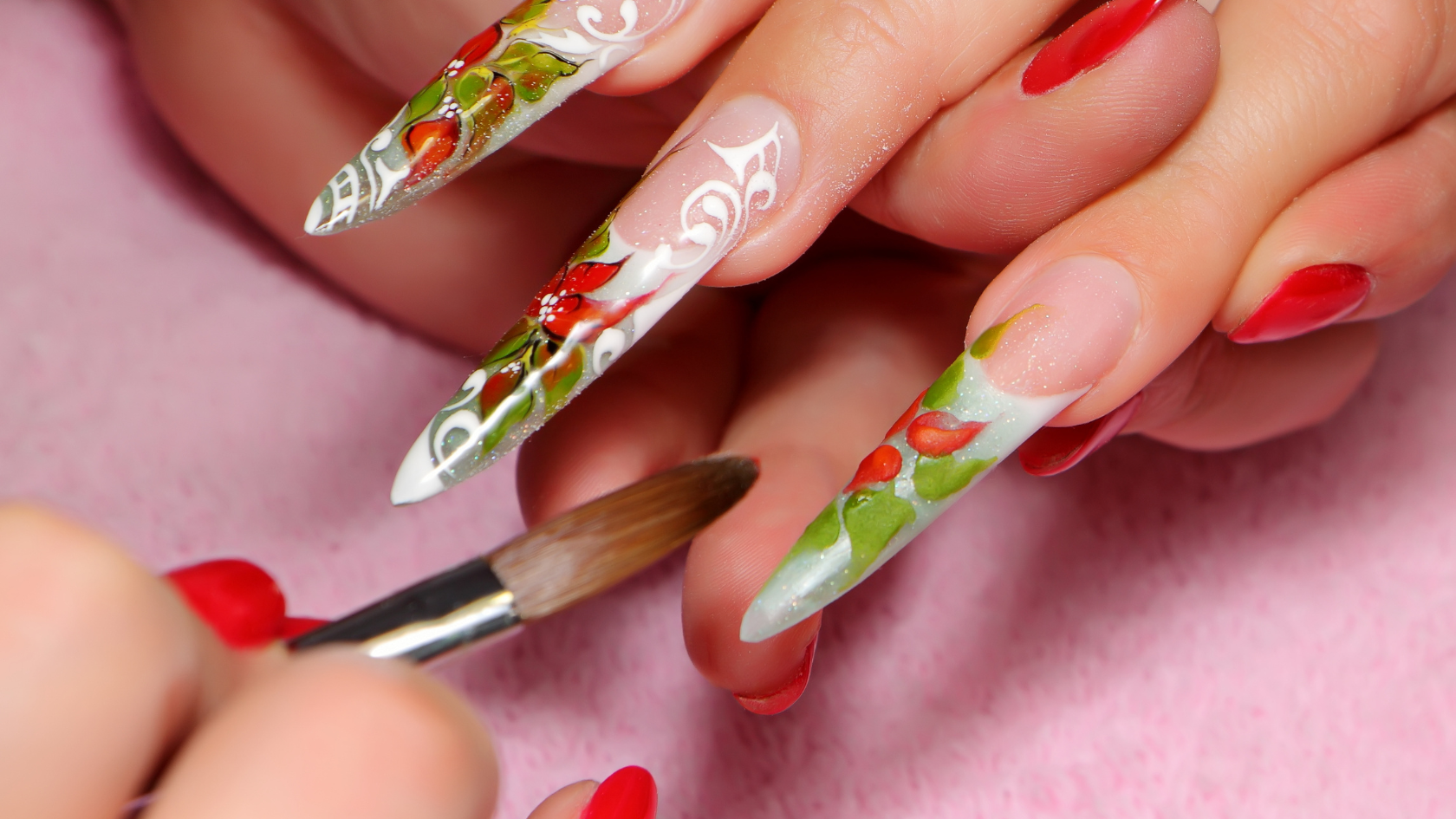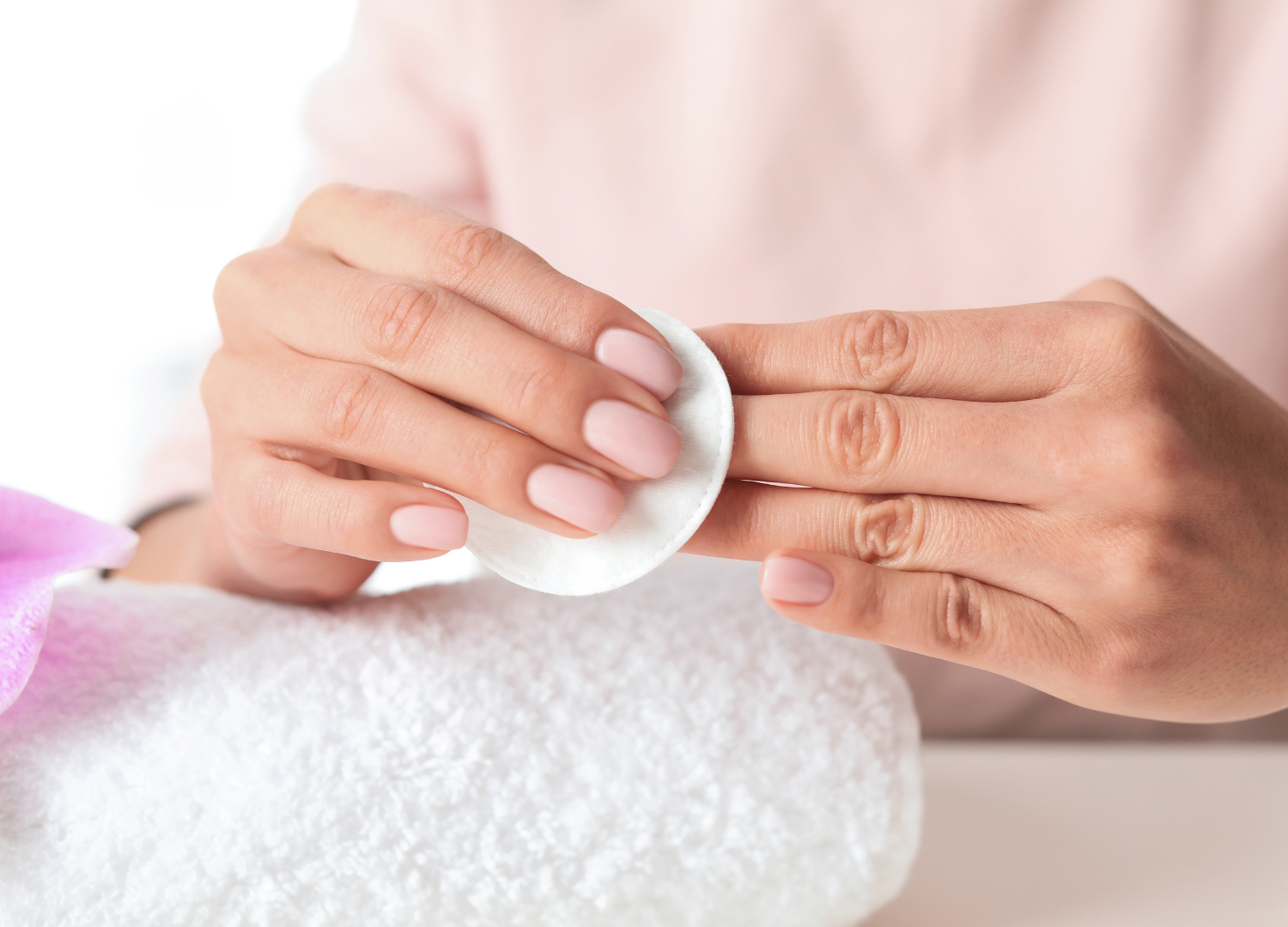
Acrylic Nails & Nail Thinning: Your Complete Guide
Acrylic nails have become a popular choice for those seeking long-lasting, durable, and customizable nail enhancements. However, concerns have arisen about the potential for nail thinning, a condition that can compromise the health and strength of natural nails. This comprehensive guide will explore the world of acrylic nails, address the issue of nail thinning, and provide valuable insights to help you make informed decisions about your nail care routine.
What Are Acrylic Nails?

Acrylic nails are artificial nail enhancements created by combining two key components - a liquid acrylic monomer and a powdered polymer. When mixed, this forms a durable plastic that can be molded and adhered to your natural nails.
The Application Process
First, your natural nails are prepped by pushing back cuticles and gently buffing the nail surface to aid adhesion. A dehydrating primer is applied.
The nail tech then dips a brush into the liquid acrylic, followed by the polymer powder, forming a pliable bead. This bead is precisely sculpted onto your nail, building up the desired extension length layer by layer.
Once set, the acrylic nails undergo shaping, buffing, and high-gloss polishing for a smooth, flawless finish.

Customized Nail Styles
Acrylic offers extensive customization from subtle nude looks to dramatic designs. Extensions range from short, natural-looking French tips to bold stiletto shapes.
Vibrant colors, glitters, gemstones, and intricate 3D artwork allow for creative self-expression. Skilled nail artists sculpt acrylics into virtually any fashionable nail style imaginable.To get inspired by the latest trends and explore a wide range of trendy nail art designs for 2024, check out our in-depth guide that showcases innovative ideas and must-try styles for your next salon visit.
Why Acrylic Nails Are So Popular?
Flawless, Long-Lasting Results
One major appeal of acrylics is their ability to create a perfect nail look that lasts. The extensions can seamlessly cover up nail imperfections like cracks or ridges, chips or unevenness, and short, bitten nails. With acrylic’s durable coating, your manicure resists chips, cracks, and lifting for 2-3 weeks until your refill appointment. This provides fresh, flawless nails with minimal upkeep.

Low-Maintenance Convenience
Speaking of low upkeep, acrylic nails are extremely low-maintenance compared to regular nail polish. There’s no need to worry about smudging a fresh manicure or polish chipping after a couple of days. Acrylics offer carefree, long-lasting wear that’s ideal for an active lifestyle.For those looking to perfect this ease of beauty on their own, learn how to achieve salon-perfect nails at home with our comprehensive guide, "Create Salon-Perfect Nails at Home.

Limitless Nail Art Creativity
Acrylic provides an ultra-versatile 3D canvas for nail art. Skilled nail artists can create virtually any design from classic French tips to intricate, blinged-out looks incorporating vibrant gel colors, hand-painted art, embossed 3D designs, and gemstone/rhinestone accents. The creative possibilities are endless when it comes to customized nail art on acrylics.
With their flawless, long-lasting results, low-maintenance convenience, and design versatility, it’s no wonder acrylics remain a popular choice for stunning manicures.
What is Nail Thinning?
Nail thinning refers to the gradual weakening and thinning of the natural nail plate. Early signs include mild brittleness, subtle peeling, and minor ridges or grooves. As thinning progresses, nails may become more brittle, prone to splitting, and experience deeper grooves, discoloration, or increased sensitivity. In severe cases, thinning can lead to significant pain and even more pronounced peeling or breakage, indicating a need for immediate attention and nail care intervention.
Causes Related to Acrylic Nails
While acrylics don’t directly cause thinning, certain practices can contribute to the problem:
- Improper application by an unskilled technician
- Excessive filing or buffing of the natural nail
- Failure to take periodic breaks from acrylics
- Using harsh removal techniques like pulling or prying off acrylics
Exposure to harsh acetone soaks or nail product chemicals can also exacerbate existing thinning.
Signs You Shouldn’t Ignore
Look out for these common symptoms of nail thinning:
- Discoloration like white streaks or yellowing
- Visible ridges, grooves, or dents in the nail surface
- Nails that won’t grow or peel/split easily
- Increased brittleness and breakage
If you notice any of these signs, it’s crucial to take action promptly. Ignoring thinning can worsen the issue and lead to more permanent nail damage.
With proper precautions and nail care, thinning from acrylics can often be prevented or reversed before it progresses too far.
Preventive Measures for Nail Health
Proper Application by Skilled Techs
The key to preventing nail thinning and damage is ensuring acrylic nails are properly applied from the start by an experienced nail technician. Look for salons/techs with extensive training in correct nail preparation (no over-filing or buffing), using precise liquid/powder ratios and application techniques, avoiding removing excessive natural nail, and properly sizing and shaping acrylic nails for your nail beds. An unskilled application raises risks of lifting, gaps allowing water/bacteria in, and excessive stress on natural nails.
Nail Care Between Appointments
You also play a role in preventing thinning by caring for acrylics and natural nails properly between salon visits:
- Use cuticle oil/creams to hydrate nail beds
- Wear protective gloves for housework, cleaning, etc.
- Avoid excessive water exposure and chemicals
- Be gentle - no picking, prying, or pulling on acrylics
Safe, Professional Acrylic Removal
Never attempt to remove acrylic nails yourself by prying, picking, or peeling them off! This can severely thin and damage your natural nails.
Instead, schedule removal appointments and let professionals soak off acrylics carefully using proper techniques and acetone products. This minimizes trauma to nails.
By good application, home care, and professional removals, you can enjoy acrylic enhancements while keeping natural nails strong.

Treatment and Recovery from Nail Thinning
Nourishing Nail Treatments
If your nails have become thin and damaged, incorporate nourishing treatments into your routine. Use nail strengtheners or keratin treatments to fortify thin nails, apply cuticle oils and nail conditioners to hydrate and repair, and consider getting professional nail masks or wraps for intense conditioning. Look for products with ingredients like vitamins, proteins, and oils to deeply replenish and harden compromised nails.
Home Care for Nail Strength
You can also support nail recovery at home by massaging nails with coconut, olive, or vitamin E oils, taking biotin supplements to boost nail growth and thickness, and eating nail-friendly foods like eggs, nuts, beans, and leafy greens. The key is providing both external nourishment and internal nutrition to rebuild strong nails.
When to Seek Professional Help
If at-home efforts don’t improve severe thinning or persistent issues like nail shedding or fungus, it’s time to see an expert. Visit a dermatologist to rule out medical causes like deficiencies, consult a nail specialist for professional treatments and monitoring, and consider taking a prolonged break from artificial nails.
Tips for Healthy Acrylic Nail Use
1. Give Your Nails Periodic Breaks
While acrylic nails are convenient, it’s important to remove them periodically to allow your natural nails to recover and breathe. Aim to take breaks every 3-4 months by having the acrylics properly removed. During these breaks, which should last for at least 2-4 weeks, focus on nourishing your natural nails with strengthening treatments and oils to restore their health and resilience.
During these breaks, focus on letting your bare nails re-moisturize and regain strength through nail-strengthening treatments and oils. This prevents excessive thinning from prolonged acrylic use.
2. Watch for Warning Signs
Be attentive to signs that your nails need a break from acrylic, such as:
- Excessive thinning, peeling, or splitting of the nail plate
- White, brown, or bluish discoloration
- Throbbing pain or discomfort around the nail bed
If you notice these issues, it’s best to have the acrylics safely removed right away and give your nails extended time off to heal.
3. Perform Regular Nail Checks
Get in the habit of checking your nail condition each time you have acrylics filled or removed. Gently press on the nail to check for movement, which indicates thinning. Look for signs of discoloration, ridges, dents, or lifting.
If you notice any concerns while wearing acrylics, have them evaluated promptly rather than ignoring potential issues that could worsen over time.
Balancing acrylic use with regular breaks, heeding warning signs, and monitoring closely can enjoy the benefits of acrylic nails while still maintaining nail health.
Press-On Nails: The Perfect Alternative for Acrylic Lovers
If you love the look of acrylic nails but want to protect your natural nails, press-on nails are the perfect solution. However, other alternatives like dip powder nails or gel nails may also provide a safer option while still delivering long-lasting results. Dip powder nails offer a similar strength to acrylics but with a gentler application process that may reduce the risk of thinning. Gel nails provide flexibility and durability without the need for harsh removal chemicals, making them a good option for those concerned about nail health. By exploring these alternatives, you can enjoy beautiful nails while minimizing potential damage to your natural nail plate.



